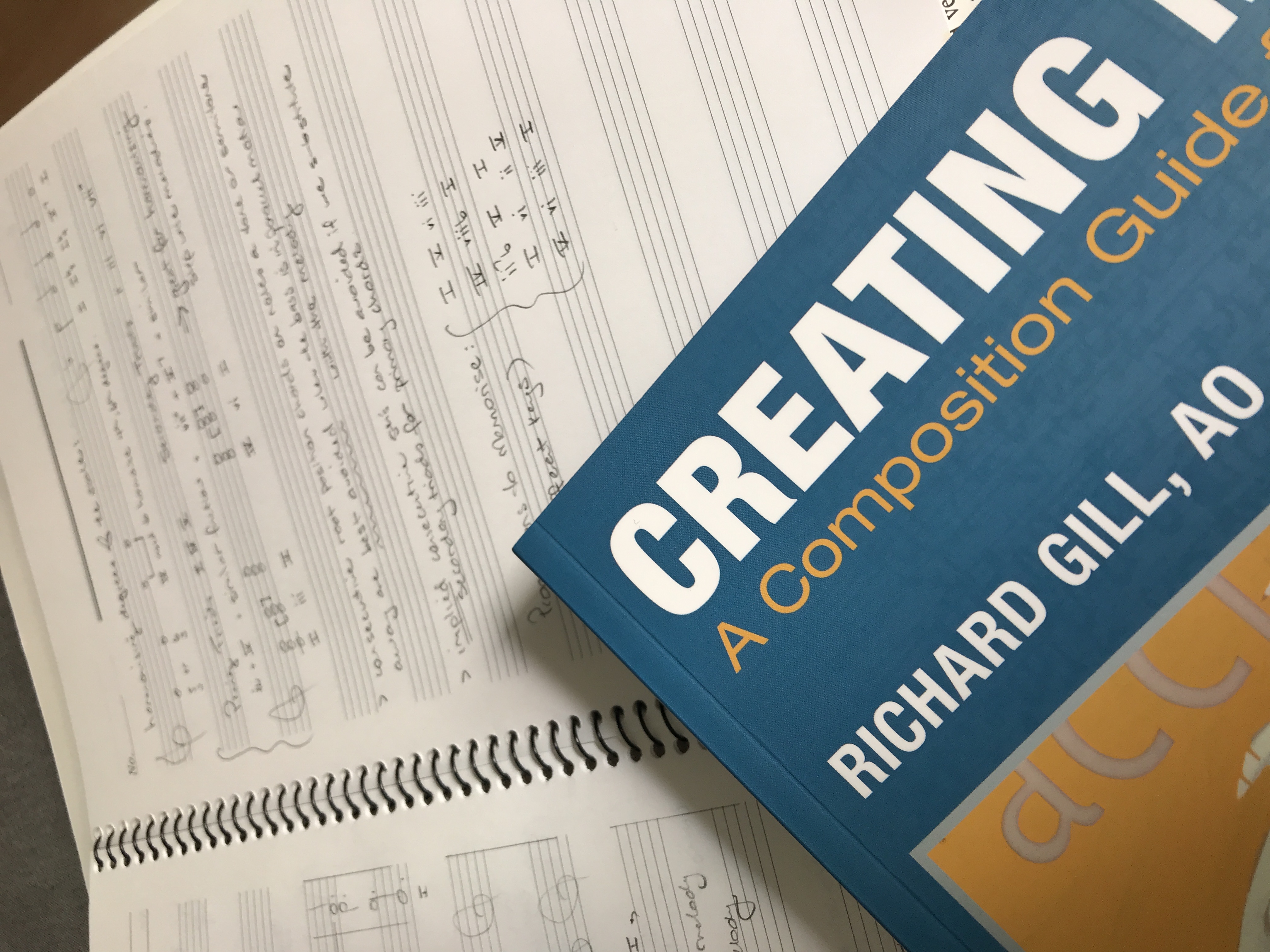This post is the summation of much trial and error, teaching, grading, collecting work samples, more grading and then still more teaching. My colleagues and friends around the world have given me much support over the years in every aspect of curriculum writing and I hope there are many more to come! As you can see from the cover image reading and learning is a constant part of my job. A big thank you to Jane Talese from Australia for sending me this wonderful book.
With my experience of backward mapping content from the Music Diploma (Grade 11, 12) course to Middle School, I have sought to create a planner that outlines content and assessments, that not only builds on the Primary scope of inquiry but also leads directly through the Middle Years Programme. Why? To illustrate the skills and content students need, to meet the demands of the Diploma course. Not every student I know will study music in Grades 11 and 12. But the lessons should still be powerful, giving them a sense of discovery and most of all, see them publish, perform or create something original.
‘With a little help from my friends’ (yes, a Beatles quote) I can now present this download to you for critique, sharing and of course, teaching. Each column is a grade level, with three units per grade. They are color coded for grades 6-10 and I look to integrate world music, with both contemporary and Western Art music for comparison and depth of study. It is accompanied by outcomes from the Australian NSW syllabus and mapped to targeted ATL’s. Students also have to think creatively about Portfolios from the very beginning.
Why share this Scope & Sequence?
A large part of my blogging about music education has been about the power of collaborative sharing. I have not had much time the last few months because I have been busy re-creating resources to match my research on how we learn. By making this resource free, I am saying to music educators everywhere, ‘I have taught in different systems of curricula and I believe I have found an approach for MYP Music. Read through this for me, critique and question me about it. I am open to discussion and I value feedback.’
Secondly, if you find yourself in a situation where you do not have enough time with your students or you do not teach Aural and Composition, perhaps you could use this as a starting point to experiment in your classroom. One of my Music-MYP/Diploma-Teaching friends Alison Armstrong commented as she read through the draft for me:
“You consistently use compositions and artists that are compelling and encourage students to listen to a wide range of styles and ideas.”
How could you make use of this Curriculum Map?
1. Personal Research & Implementation. If you find some of these ideas as new or even foreign, perhaps you could use the assessments or even the breakdown of Evaluative, Formative and Summative tasks to improve your own knowledge of an area. I have been spending time on Scoreclub.net with composer Alain Mayrand or Berklee Online degrees to dig deeper into composition and orchestration for my classes. It has opened up new worlds for me. Research into World Music genres as well.
2. Advocacy within your School. I see my students from grade 6 to 9 twice a week. More so from Grade 10 to 12. This means every student from grades 6-9 has Music as a class, each year. The amount of progression I can then program into their learning is wonderful. Not to mention I can prepare them to be confident and capable musicians for performing, composing and listening. If you would like to use my planner for advocacy in your school, I would be honored. Students need to have time to ‘make music, and then time to make it up.’ (paraphrased from Richard Gill, Author of the Composition Guide for Students).
3. Student Preparation for the DP. Along with my blog over at Imagination Creates Reality (Wagner) you can use this resource as a possible starting point to find connections to the Diploma tasks in grade 10. This way students can confidently enter the Diploma sphere with everything they need, to do well.
If you are inspired or provoked, please comment. If you do end up teaching with this resource please credit me. Additionally, if you would like the Apple Numbers Template seen above, just send me a Paypal Donation of your choice. I will send you the template file with all the drop-down fields and content to your email address.

This work is licensed under a Creative Commons Attribution-NonCommercial-NoDerivatives 4.0 International License.

Great resource, thank you for sharing. We see our students only 40 mins a week for band and 40 mins a week for choir so we are looking to restructure how we deliver to the students. There are some very insightful ideas and detailed work here.
I worked out how to download. Many thanks!
As a first time MYP teacher, this is so very helpful and gives me a sense of direction. Thank you for this wonderful resource Samuel.
I’m a new MYP music teacher. I’ve been stuck in a rut teaching the same things, but this gives me lots of new ideas and direction to go. Thank you so much!
Thank you very much for the this resource. I am a first time MYP teacher and it was quite difficult to make a planning properly.
It is tricky and I completely understand the apprehension. I have also published a book with a teacher pack outlining 12 separate units.
In the coming weeks I will publish the new ones I have developed as well. Stay tuned!
You are most welcome, I am publishing my more up-to-date planners very soon. Is there anything in particular you would like to teach/explore?